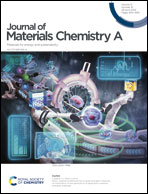Recent progress on carbon materials for emerging zinc-ion hybrid capacitors
Abstract
Zinc-ion hybrid capacitors (ZHCs) have gained increasing attention due to their numerous advantages such as cost-effectiveness, environmental friendliness, improved safety, high energy/power densities, and long-term cycling stability. However, despite these benefits, the development of ZHCs is still in its early stages with several challenges. Carbon materials have emerged as promising cathode candidates for application in ZHCs due to their low cost, abundance, diverse structures, and good electrical conductivity. In this review, we systematically summarize the research progress on carbon materials and the electrolytes for ZHCs, including activated carbon, graphene, porous carbon, and heteroatom-doped carbon materials. The synthetic methods, morphology characterization, electrochemical performance, and energy storage mechanisms for zinc-ion storage based on various types of carbon cathodes are comparatively discussed. Finally, the current challenges and prospects of carbon materials in zinc-ion storage systems are proposed. This review provides a comprehensive understanding of the research on carbon materials, which will be beneficial for the practical application of ZHC devices with high performance.

- This article is part of the themed collection: Journal of Materials Chemistry A Recent Review Articles


 Please wait while we load your content...
Please wait while we load your content...